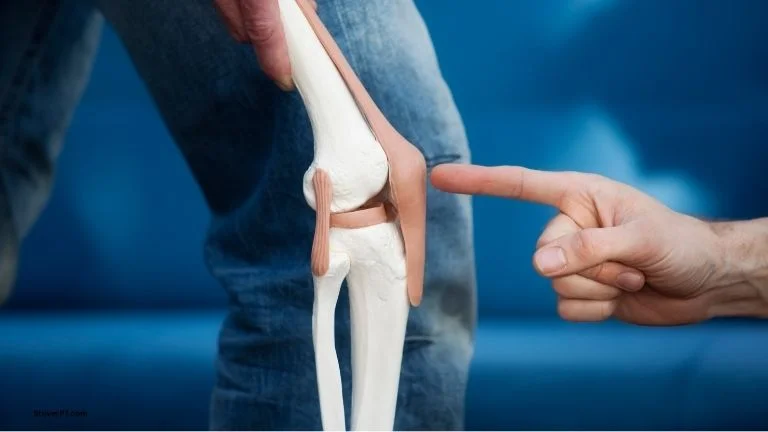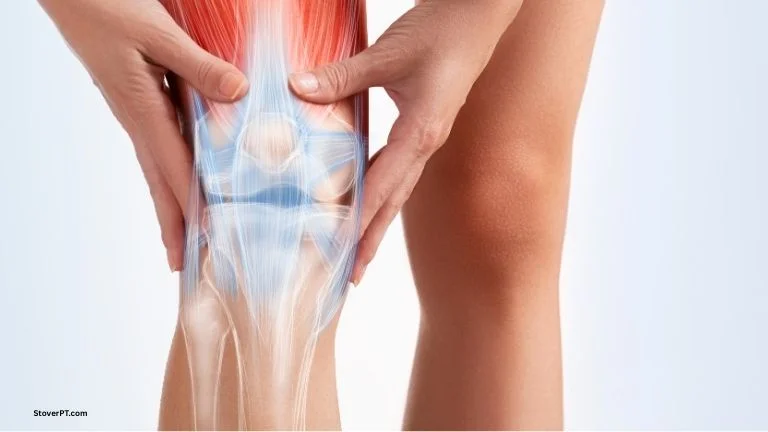Bony Lump on Knee Cap No Pain: Causes & Treatment Options

A bony lump on the kneecap without pain is often a sign of conditions like Osgood Schlatter disease, prepatellar bursitis, or osteophytes. These growths typically develop due to inflammation, injury, or age-related changes.
What Causes a Bony Lump on the Knee Cap Without Pain?
A bony lump on the knee cap that doesn’t cause pain can be concerning, but it’s often not a serious medical issue. These lumps can form for various reasons, including chronic inflammatory conditions, joint deformities, or as a response to tissue damage. Understanding the potential causes can help you determine whether medical attention is necessary and what treatment options might be available.
Knee lumps can be single or multiple, soft or firm, and may grow rapidly or remain the same size for extended periods. While some lumps require immediate medical attention, painless bony lumps often don’t need urgent care. However, it’s still important to monitor any changes and consult a healthcare provider if you’re concerned.
Common Types of Painless Knee Lumps
Osteophytes (Bone Spurs)
Osteophytes, commonly known as bone spurs, are bony lumps that grow on the bones in the spine or around joints, including the knee. They form when a joint or bone has been damaged by arthritis or other conditions. These smooth, hard growths develop as the body attempts to repair tissue damage near the bone.
Bone spurs often don’t cause any symptoms, which is why you might have a bony lump on your knee cap without experiencing pain. They’re particularly common in people with osteoarthritis, as the body creates new bone tissue to replace damaged tissues—essentially forming a bony scar through a process called osteophytosis.
These growths typically occur on bones that experience significant stress, such as the knee joint. You might be able to see or feel a bone spur if it’s close to your skin, appearing as a knob or bump on your knee cap.
Osgood Schlatter Disease
Osgood Schlatter disease commonly causes a bony lump below the knee cap, particularly in adolescents and children. This condition results from traction of the quadriceps muscle pulling on the patellar tendon before it fully ossifies.
The resulting bump is usually temporary in younger individuals. With proper rest and targeted rehabilitation exercises, the bump often settles and shrinks as the tendon attachment matures during puberty. However, if the condition is ignored and sports activities continue despite knee pain, the bony bump may become permanent.
Prepatellar Bursitis
Prepatellar bursitis, also known as housemaid’s knee, carpet layer’s knee, coal miner’s knee, or carpenter’s knee, is inflammation of the bursa (a fluid-filled sac) located in front of your kneecap. This condition occurs when the bursa becomes irritated, damaged, or infected and produces excess fluid.
The extra fluid causes the bursa to swell, creating pressure on other parts of your knee. Prepatellar bursitis is usually visible as swelling on the front of the knee. While it often causes pain, in some cases, especially in its early stages, it might present as a painless lump.
Other Potential Causes
Several other conditions can cause bony lumps on the knee cap without pain:
- Rheumatoid arthritis can lead to the formation of nodules or lumps on joints, including the knee.
- Gout may cause bumps to form on the knee due to uric acid crystal buildup.
- Benign tumors such as fibromas (benign tumors composed of fibrous or connective tissue) or lipomas (benign tumors composed of fatty tissue) can appear as painless lumps.
- Cysts, which are fluid-filled, sac-like structures, can form in various parts of the body and often feel like lumps. A Baker’s cyst is a collection of fluid from the knee joint that appears at the back of the knee.
When to Seek Medical Attention
While a painless bony lump on the knee cap often doesn’t require immediate medical attention, certain symptoms should prompt you to consult a healthcare provider:
Signs That Require Prompt Medical Care
- If the lump is growing rapidly
- If you develop pain, redness, or warmth around the lump
- If you notice changes in your ability to move the knee joint
- If you experience instability while walking
- If the lump appears after a significant injury
- If you have a fever along with the knee lump
Signs That Require Emergency Care
Seek immediate medical care (call 911) if you experience:
- Paralysis
- Loss of sensation in the lower leg
- Absent pulses in the feet
- Inability to move the knee joint
- Severe bleeding
- Uncontrollable pain
- High fever (higher than 101 degrees Fahrenheit)
- Obvious breakage or deformity of the bones
Diagnosis of Knee Lumps
When you visit a healthcare provider for a bony lump on your knee cap, they will likely perform several diagnostic procedures to determine the cause:
Physical Examination
Your doctor will examine the lump, checking its size, consistency, mobility, and whether it causes pain when touched. They will also assess your knee’s range of motion and stability.
Medical History
Your doctor will ask questions about:
- How long you’ve had the lump
- Whether it’s growing or changing
- If you’ve experienced any trauma or injury to the knee
- If you have symptoms in other joints
- Your occupation and activities, especially those involving kneeling
Imaging Tests
Depending on the suspected cause, your doctor may order:
- X-rays to visualize bone structures and detect fractures, arthritis, or bone spurs
- Ultrasound to determine if the mass is solid or fluid-filled
- MRI for a more detailed view of soft tissues, including tendons, ligaments, and cartilage
- CT scan for a comprehensive view of the knee’s structure
Laboratory Tests
In some cases, your doctor may:
- Draw fluid from the lump through a needle (aspiration) to check for infection or inflammation
- Order blood tests to check for inflammatory markers or signs of infection
- Perform a biopsy if there’s concern about a tumor
Treatment Options for Painless Knee Lumps
Treatment for a bony lump on the knee cap without pain depends on the underlying cause. In many cases, if the lump isn’t causing symptoms, treatment may not be necessary. However, if the lump begins to cause pain, interferes with movement, or grows larger, several treatment options are available:
Non-Surgical Treatments
Rest and Activity Modification
- Avoid activities that put pressure on the knee, especially kneeling
- Use knee pads for sports and occupations that require kneeling
- Modify movement patterns to reduce stress on the knee joint
Physical Therapy
- Targeted exercises to strengthen the quadriceps and glutes
- Stretching routines to improve flexibility
- Techniques to improve movement patterns and reduce pressure on the patellar tendon
Medications
- Over-the-counter pain relievers such as paracetamol and ibuprofen for pain and inflammation
- Topical treatments like magnesium oil, Voltaren gel, and arnica for temporary pain and swelling reduction
Compression and Ice
- Compression wraps to provide pressure and prevent fluid collection
- Ice therapy to reduce inflammation and swelling
Nutritional Supplements
- Collagen and MSM (methylsulfonylmethane) may provide building blocks for tendon repair
- Always consult a doctor before starting any supplements

Medical Procedures
Aspiration
For conditions like prepatellar bursitis, a doctor may drain excess fluid from the bursa using a needle. This procedure can provide immediate relief from pressure and swelling.
Corticosteroid Injections
If inflammation is causing problems, a corticosteroid injection into the affected area may help reduce swelling and pain.
Antibiotics
If the lump is caused by an infection, such as infectious bursitis, antibiotics will be prescribed to clear the infection.
Surgical Options
Surgery is typically considered a last resort for treating knee lumps, but it may be necessary in certain cases:
Bursectomy
Surgical removal of an inflamed bursa may be recommended for chronic prepatellar bursitis that doesn’t respond to conservative treatments.
Joint Replacement
For severe arthritis with bone spurs that significantly affect joint function, joint replacement surgery might be considered.
Tumor Removal
If the lump is a tumor, surgical removal may be necessary to determine if it’s benign or malignant.
Prolotherapy: An Advanced Treatment Option
Prolotherapy has gained recognition in the medical community for treating various knee conditions, including those that cause lumps. This treatment involves injecting a natural regenerative solution with small needles to stimulate the production of collagen cells, which the body uses to repair structures in and around the knee.
Unlike some treatments that only address symptoms, prolotherapy aims to treat the root cause of knee lumps, potentially providing a permanent solution and preventing symptoms from returning. Research has shown prolotherapy to have pain-relieving, anti-inflammatory, and regenerative benefits.
Prevention Strategies
While not all knee lumps can be prevented, several strategies may reduce your risk:
Protective Measures
- Use knee pads or cushioning when kneeling for extended periods
- Take breaks during activities that put pressure on your knees
- Maintain proper form during exercise and sports activities
Lifestyle Modifications
- Maintain a healthy weight to reduce stress on knee joints
- Stay physically active to keep joints flexible and muscles strong
- Follow a balanced diet rich in anti-inflammatory foods
Proper Exercise Techniques
- Warm up before physical activity
- Strengthen the muscles around the knee, particularly the quadriceps and hamstrings
- Avoid overtraining and allow adequate recovery time between intense workouts
Living with a Knee Lump
If you have a painless bony lump on your knee cap that doesn’t require treatment, you can take steps to monitor it and prevent it from becoming problematic:
Regular Monitoring
- Check the lump periodically for changes in size, shape, or appearance
- Note any new symptoms that develop, such as pain, redness, or difficulty moving the knee
Adapting Activities
- Modify activities that put pressure on the knee
- Use supportive equipment like knee braces during physical activity if recommended by your healthcare provider
When to Follow Up
- Schedule regular check-ups with your healthcare provider to monitor the lump
- Seek medical attention if the lump changes or if you develop new symptoms

Frequently Asked Questions
What does a Baker’s cyst look like?
A Baker’s cyst is a fluid-filled cyst behind the knee that causes a bulge and tightness. The discomfort can worsen when you fully flex or extend your knee, or when you’re active. Unlike a bony lump on the knee cap, a Baker’s cyst typically appears as a soft swelling at the back of the knee.
Does the Osgood Schlatter bump go away?
In children and teens, the Osgood Schlatter bump is usually temporary. With rest and targeted rehabilitation exercises, the bump often settles and shrinks as the tendon attachment matures during puberty. However, ignoring knee pain and continuing to play sports may lead to a permanent bony bump.
How do you reduce swelling on the side of your knee?
Swelling on the side of the knee indicates inflammation. To reduce it, you can take anti-inflammatory medications such as ibuprofen and naproxen, apply ice to the area, use compression bandages, elevate your leg, and rest the joint. If swelling persists, consult your healthcare provider.
Can bone spurs be removed without surgery?
Bone spurs typically cannot be removed without surgery. However, the symptoms associated with bone spurs can often be managed with non-surgical treatments like physical therapy, medications, and activity modifications. Surgery to remove bone spurs is usually considered only when conservative measures fail to provide relief.
How long does prepatellar bursitis last?
With rest and home treatment, the swelling and other symptoms of prepatellar bursitis usually resolve in a couple of weeks. If your prepatellar bursitis doesn’t improve after two or three weeks of rest, medical treatment may be necessary. Chronic prepatellar bursitis that doesn’t receive proper treatment can last for months or even years.





